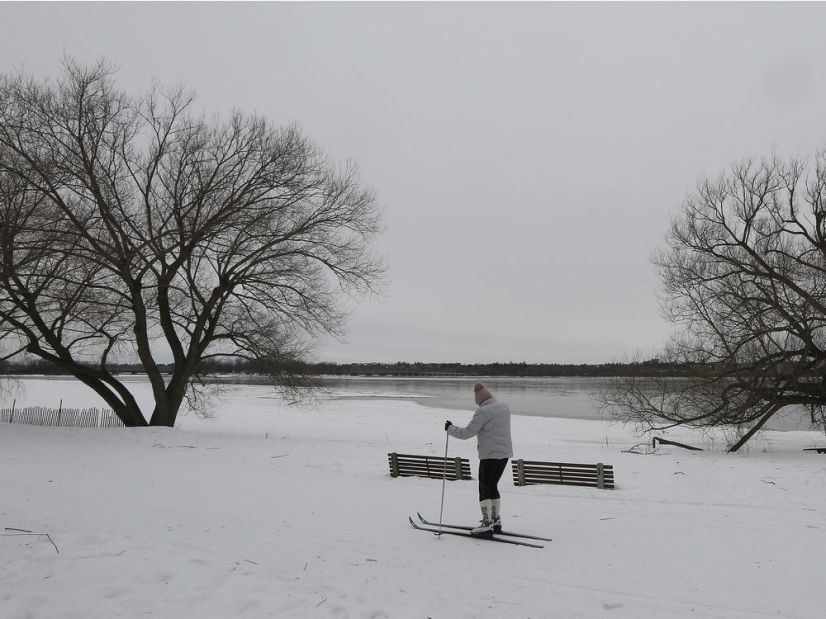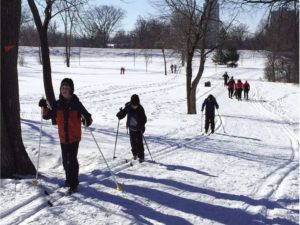
Originally published in the Ottawa Citizen
The SJAM trail has been an unqualified success in making winter sport more accessible to people who can’t get to Gatineau Park. But it and similar projects need a modest amount of secure funding.
Over the last three winters, I’ve stood on a frozen winter trail and witnessed something amazing happen.
In the Fall of 2016, I started working at a ski shop in Wellington West Village. As part of my job, I rent skis at a small location at Remic Rapids, next to the Ottawa River, where several years ago, Dave Adams began grooming a multi-use winter trail, called the Sir John A. Macdonald Winter Trail, focused on cross-country skiing. It is now such a popular spot, it may be difficult to remember how only a few years ago, what is now a vibrant winter wonderland was a desolate wasteland in the winter months.
When Dave originally secured a small amount of funding from neighbourhood organizations and crowd-funding in order to groom trails down by the river, it seemed like a great idea, but a little far-fetched. I thought Dave might be a bit of a wackadoo.
But Dave’s enthusiasm and dedication is about making winter activity more accessible in our immediate community. The recent past has provided me with a number of moments that have showed just how successful the trail has been in that respect.
One evening last week, I went for beer at the Mill Street Brew pub and counted no less than 15 pairs of skis parked outside. Standing trailside on a recent weekend, I talked to lifelong skiers and walkers who have made the SJAM trail a part of their winter routine. I rented skis to a group of Indo-Canadians trying the sport for the first time. I had people tell me about how they use the SJAM to commute to work on their Fat Bikes. Finally, in-store (I work a Fresh Air Experience) over the course of the winter, I’ve met a number young adults investing in sports equipment because they now have car-free access to a winter trail. The SJAM has been an unqualified success in making winter sport more accessible to people beyond us be-tighted lycra-heads often spotted in Gatineau Park.
I’ve met a number young adults investing in sports equipment because they now have car-free access to a winter trail.
In his recently published memoir, The Trail Beckons, Malcolm Hunter details a history of skiing in the Ottawa region. Tellingly, his history focuses almost exclusively on Gatineau. The largest investments in growing skiing, snowshoeing and, in recent years, Fat-Biking have happened outside the city of Ottawa, and been left to other organizations, such as the NCC or private clubs like Nakkertok or Chelsea Nordiq.
These organizations have done an admirable job in expanding the reach of winter activity, but, to put it frankly, are unable to meet people where they live. The city’s only cross-country ski operation, the excellent Terry Fox Athletic Facility at Mooney’s Bay, is simply too far away to be useful for many Ottawans. It is little wonder so many people in Ottawa must cross the river to be active in the winter months.

Last week, Groomer Dave and representatives from the newly formed Winter Trail Alliance met with the city’s subcommittee for Community and Protective Services to ask for a small but, importantly, secure source of funding for initiatives that get people outside in the winter. According to estimates obtained through Cross Country Canada, the Ottawa area has more than 100,000 participants in cross country skiing every winter. Gatineau Park alone boasts approximately 20,000 season pass holders. Cross-country skiing may well be the civic sport of Ottawa. Unfortunately, there are not enough places to practise it in the city.
Initiatives such as the SJAM, Ski Heritage East, Orleans Nordic, and Kanata Nordic aim not only to grow participation in skiing, but to provide multi-use outdoor venues where people live.
Getting outside makes our city’s cold winters not only bearable, but something to look forward to. With secure funding to cover some of the costs of trail maintenance, the volunteer spirit that has gotten these initiatives off the ground, and the resources used to sustain them, might be put to other uses, such as outreach into communities that have traditionally been excluded from winter activity.
One of Dave’s pet projects, for example, is developing a fleet of skis available to school groups. If there’s anything that standing at the side of a frozen trail has taught me, it is that sometimes it pays to dream big. Getting funding from the city will allow us all to dream bigger.





